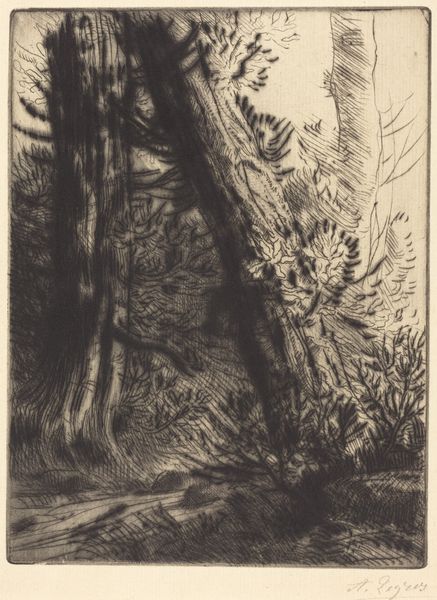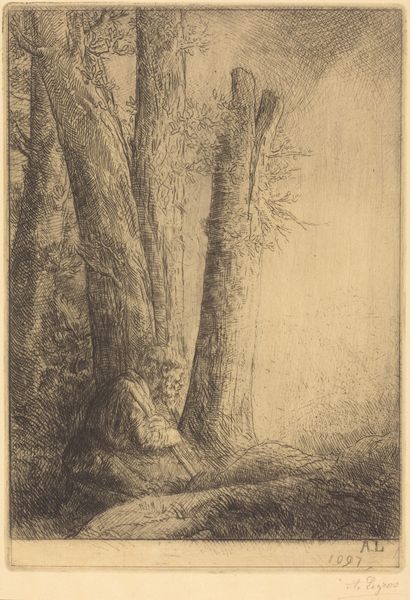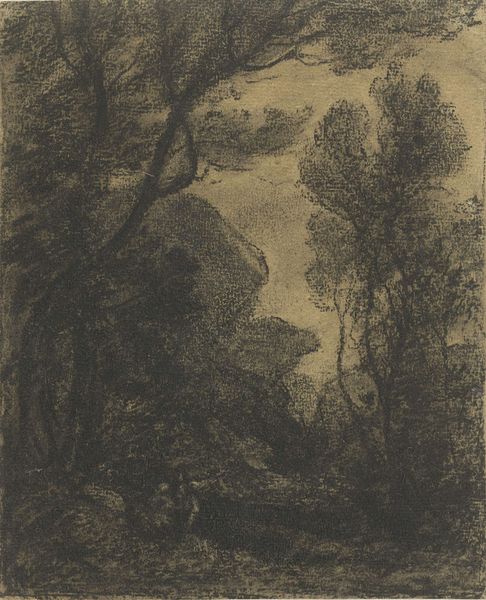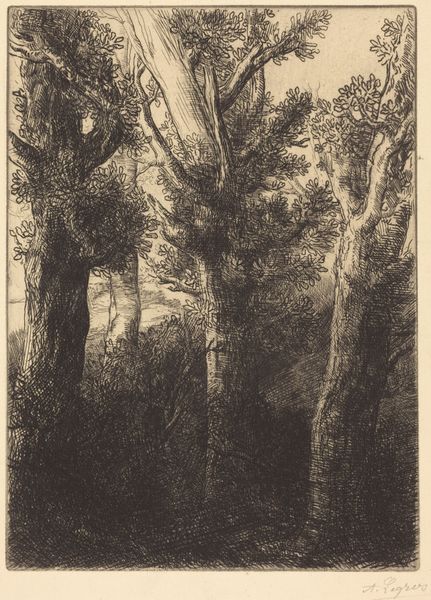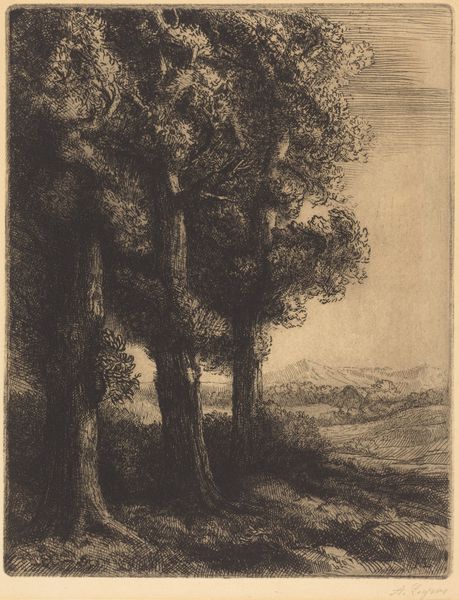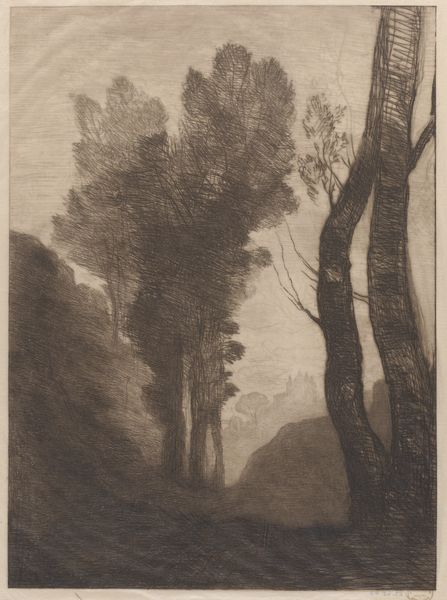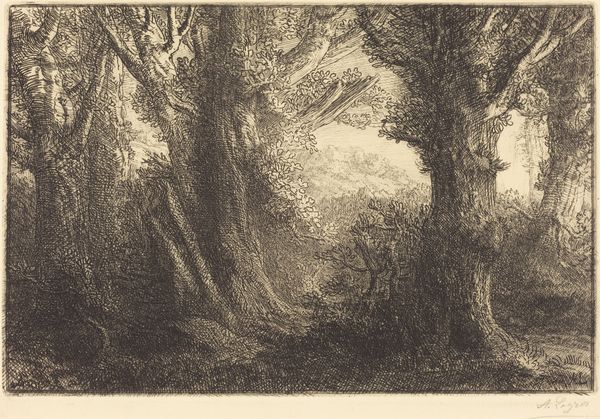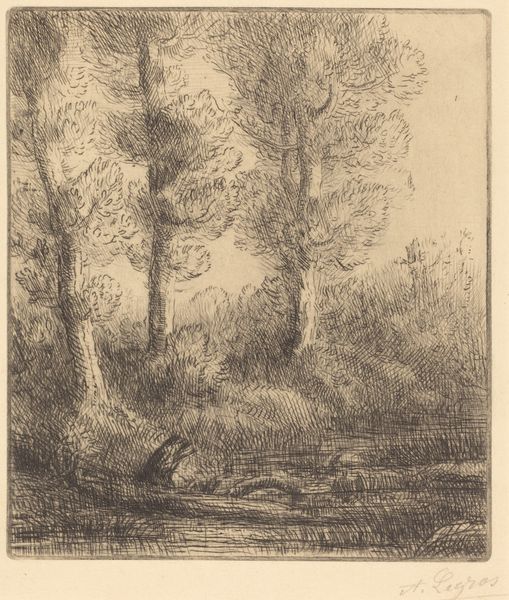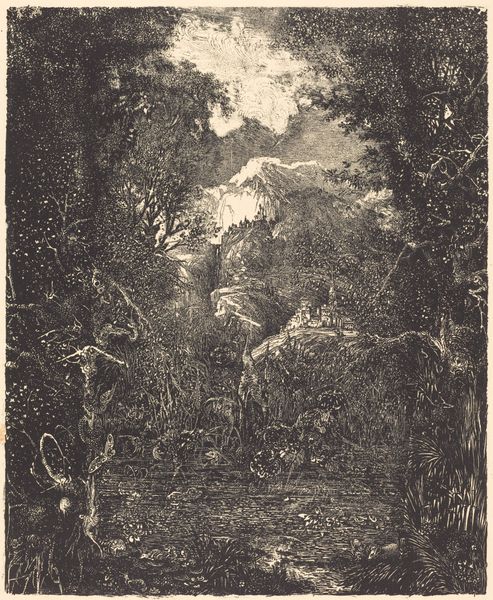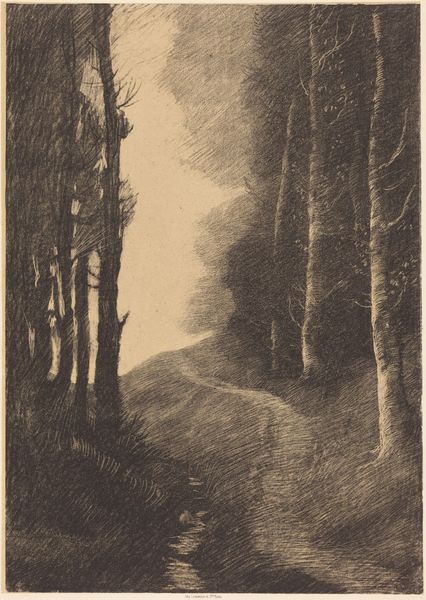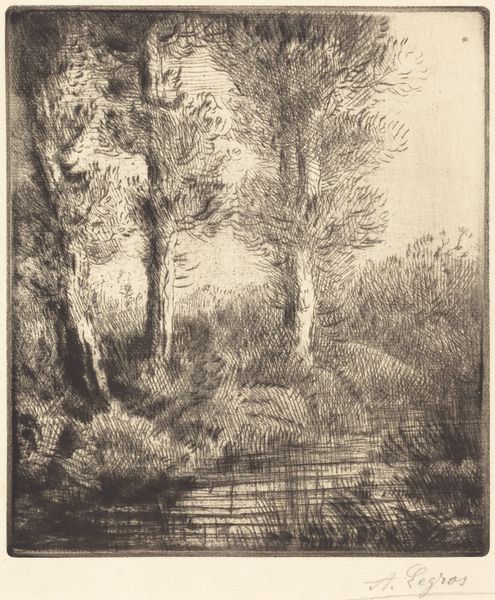
print, etching
# print
#
etching
#
landscape
#
etching
#
realism
Copyright: National Gallery of Art: CC0 1.0
Curator: Looking at Alphonse Legros’ "Landscape," we are presented with a dense, almost claustrophobic view. What's your immediate take on it? Editor: It’s undeniably moody. The intricate cross-hatching of the etching creates a somber and secretive atmosphere. All I can see are those thicket of trees framing a distant building – isolated and looming. It feels... foreboding. Curator: The framing is crucial here. Consider Legros’ engagement with Realism, but also the social context: he portrays the relationship between humanity and nature in a way that reflects growing anxieties about industrialization and urbanization. That structure in the background becomes a symbol of human encroachment, subtly threatening. Editor: I agree with you on Realism, though I find its materiality just as captivating. Think about the laborious process of etching, the layering of lines into that metal plate – and all to evoke a specific landscape. This highlights both skill and time, speaking volumes about artistic production. Curator: Precisely, the craft reinforces the social and cultural commentary. The etching technique becomes almost like a metaphor for how individuals mark or influence a landscape over time, impacting its identity through material and cultural forces. Editor: While I understand the broader implications of how people engage in labor through these images, the tactile aspect, the labor of creating the plate and the final print run matters. Curator: How do you think audiences might react, especially given their experience as individuals immersed in an industrial society at that time? Editor: Viewing this, they would be confronted with both their relationship to and alienation from labor—an essential aspect that defined their very existence. The image is heavy with these anxieties. Curator: Yes, the landscape here acts as a silent stage for wider dialogues. It challenges the pastoral ideal, highlighting a complex intersection of industrial progress and rural anxieties through visual allegory. Editor: Examining the relationship between social context and making art lets us see how deeply entangled history and our present moment really are, so thank you. Curator: And for me, seeing it through the process shows me the impact.
Comments
No comments
Be the first to comment and join the conversation on the ultimate creative platform.


